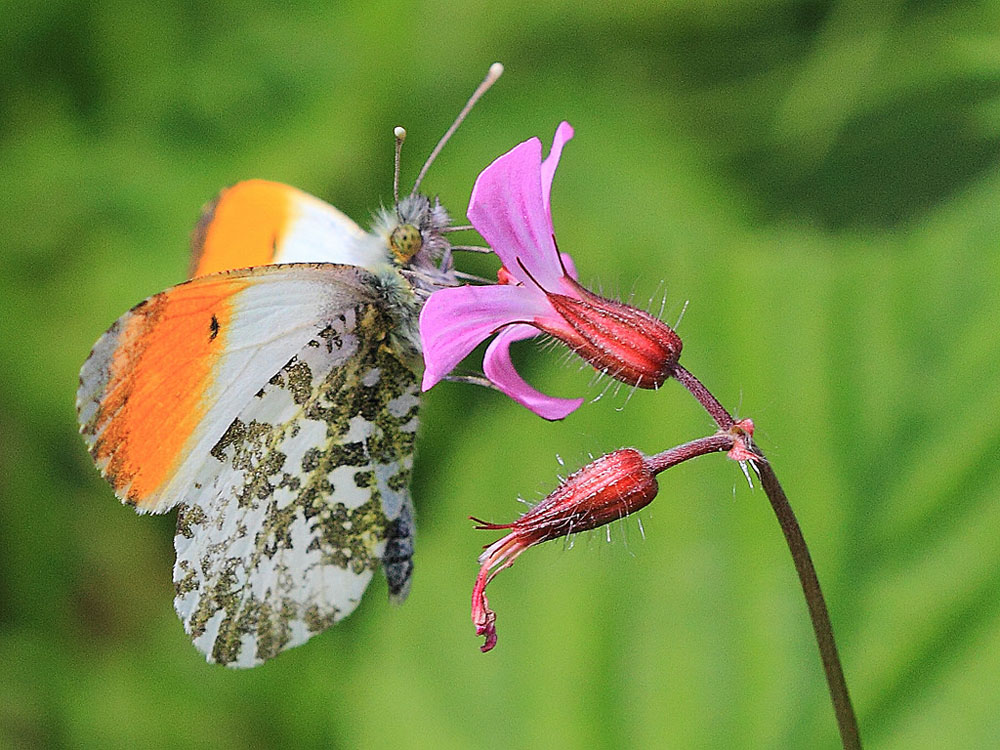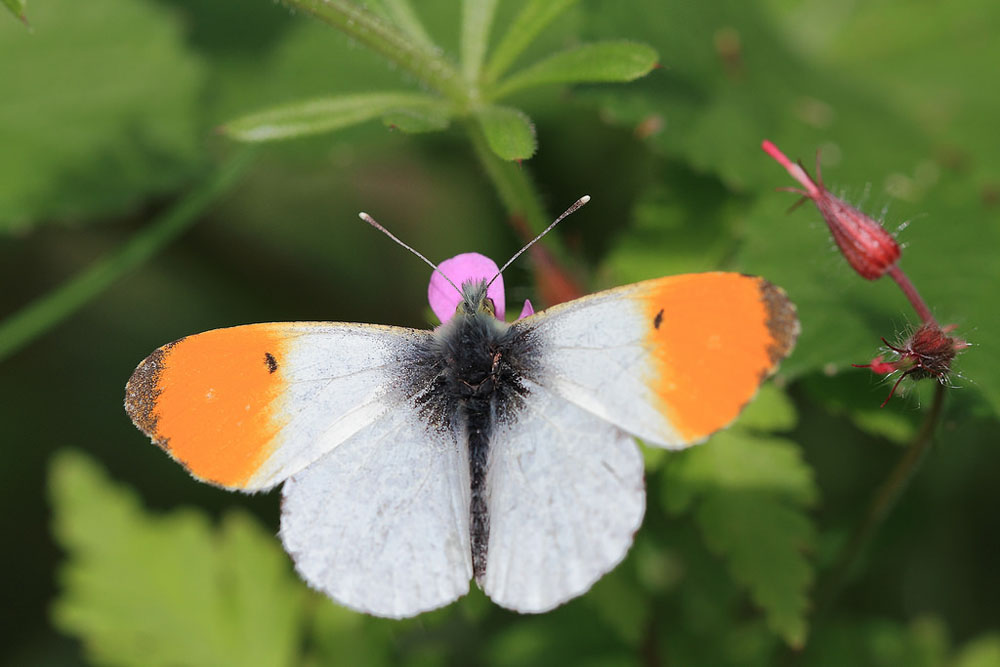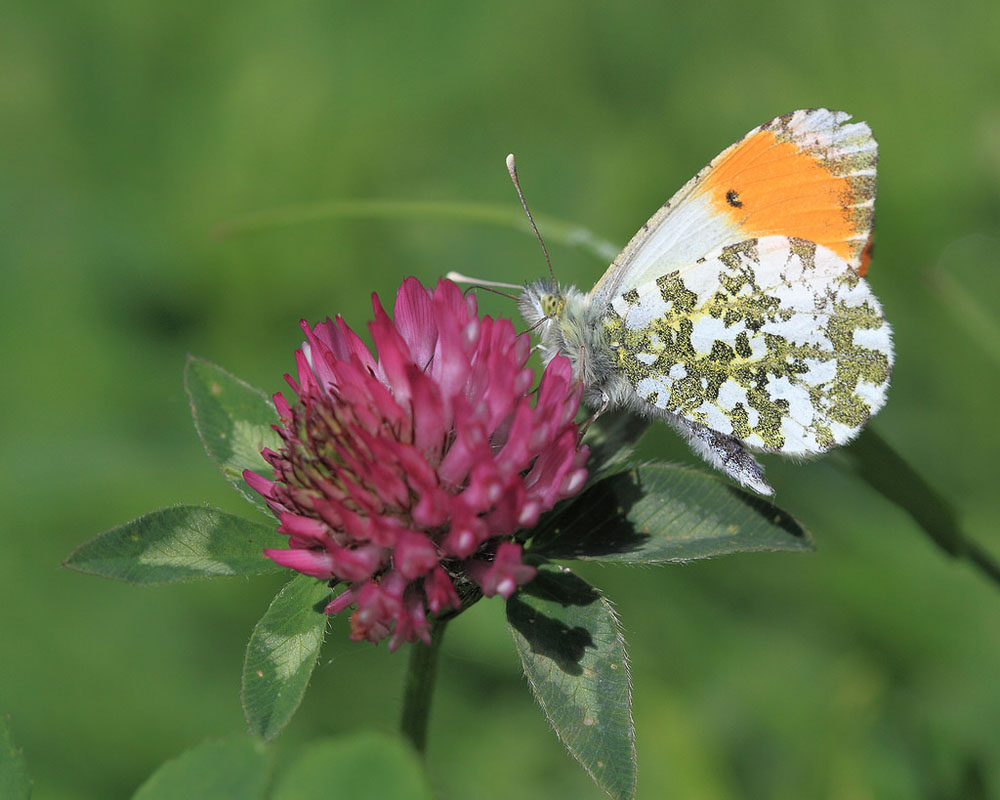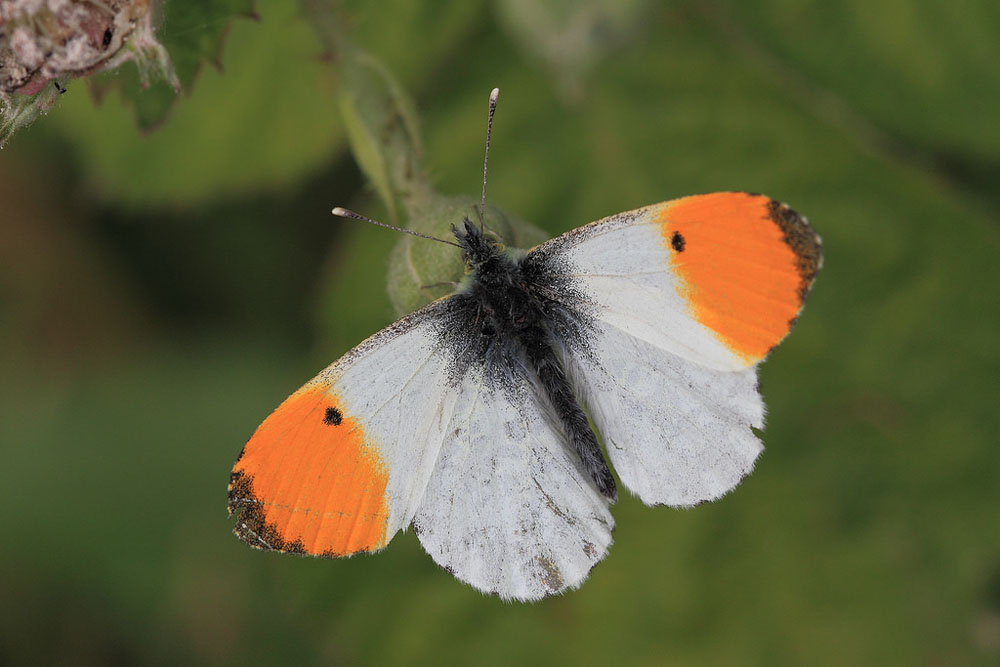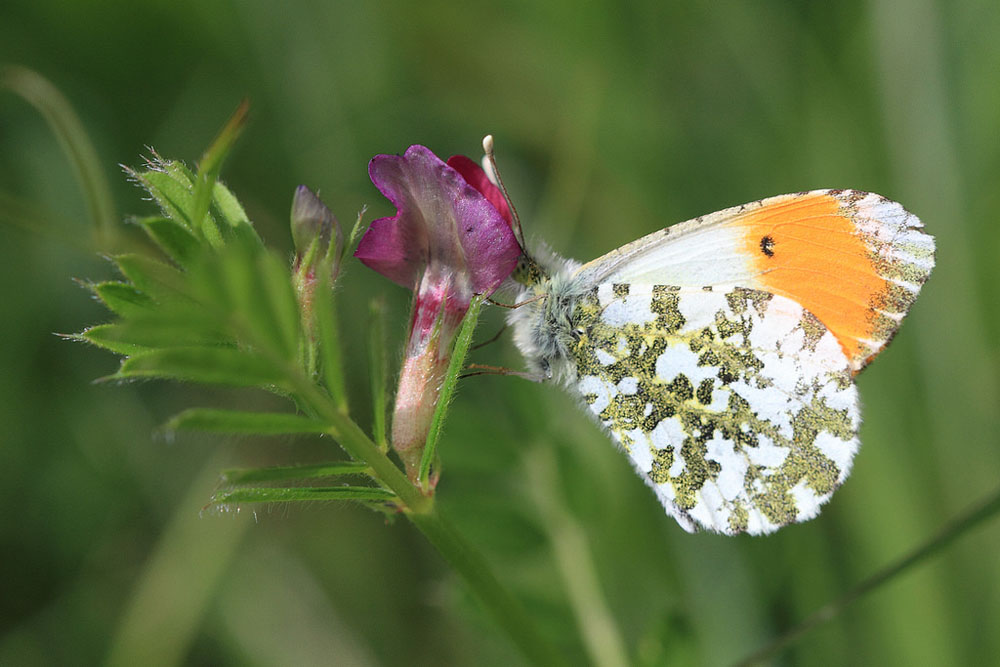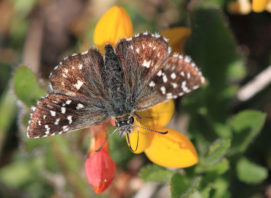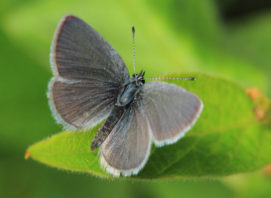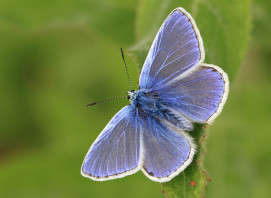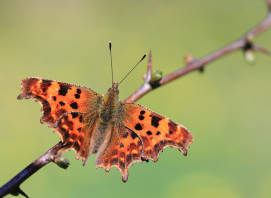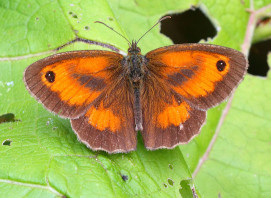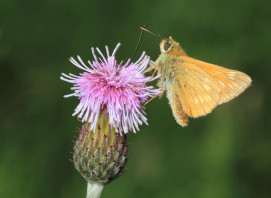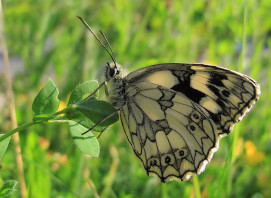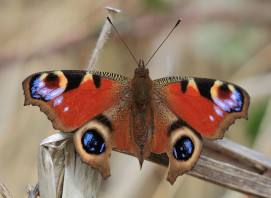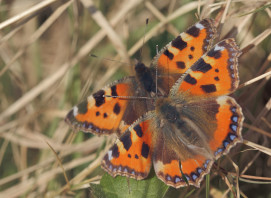Orange Tip
Pic 1: The Orange-tip does not form discrete colonies but wanders in every direction as it flies along hedgerows and woodland margins looking for a mate, nectar sources or food plants.
Captured feeding on Red Campion (Silene dioica) in Porthkerry Country Park, Vale of Glamorgan
Pic 2: The Orange-tip is in my opinion the prettiest of Springtime butterflies. The male is especially conspicuous not only for his orange wingtips but also because he is constantly patrolling, spending much of his day wandering through the countryside searching every shrub and tussock for a mate.
Pic 3: Orange-tip is feeding on Red Clover (Trillium pratense). The exposed under-wing surfaces are delicately mossed with green (or rather the illusion of green) for the lovely lichen-like mottling is created from an intricate mixture of black and yellow scales.
Pic 4: You may think that having orange tips is a sure signal for predatory birds to come and eat me! However, Orange-tips are are highly distasteful because their bodies contain large amounts of bitter mustard oils, accumulated from their food plants during the caterpillar stage. It therefore pays for the males to advertise this fact and the bright tips of the upper forewings act as a warning signal. Once a bird has tasted an Orange-tip it is reluctant to repeat the experience.
Pic 5: Orange-tip is feeding on Common Vetch (Vicia sativa). The exposed under-wing surfaces are delicately mossed with green (or rather the illusion of green) for the lovely lichen-like mottling is created from an intricate mixture of black and yellow scales.

